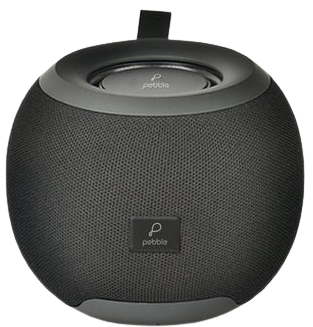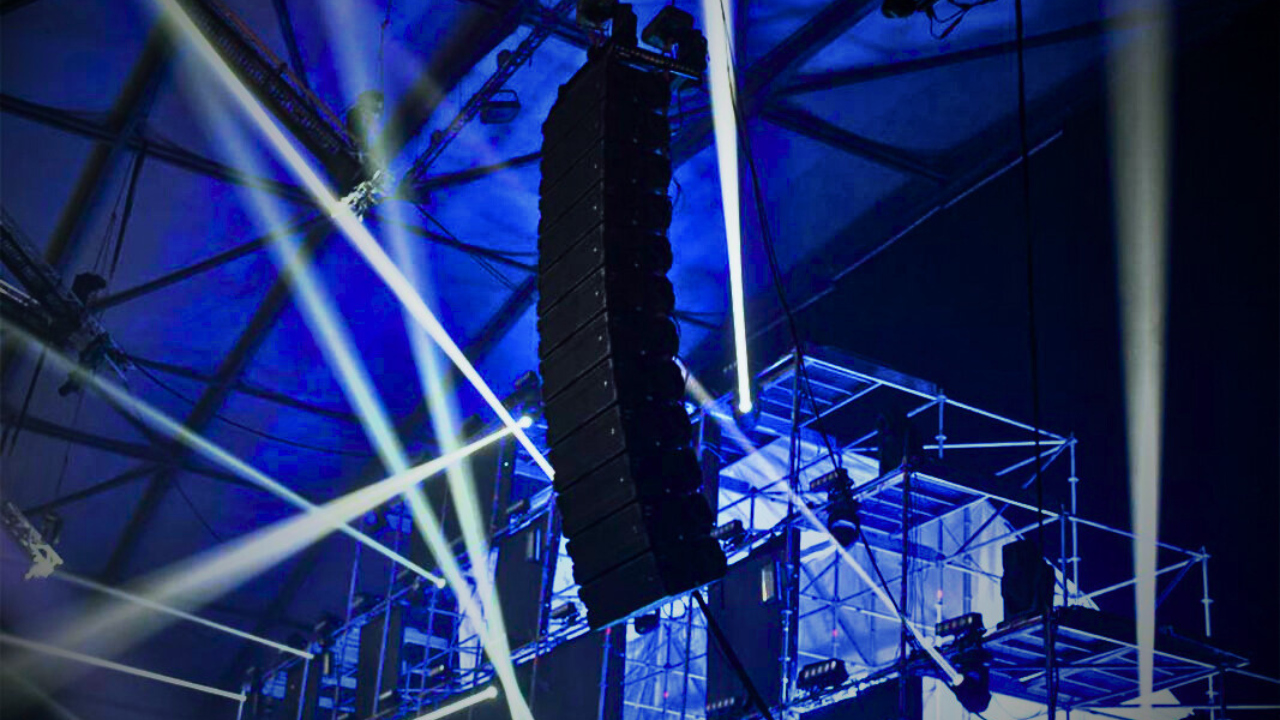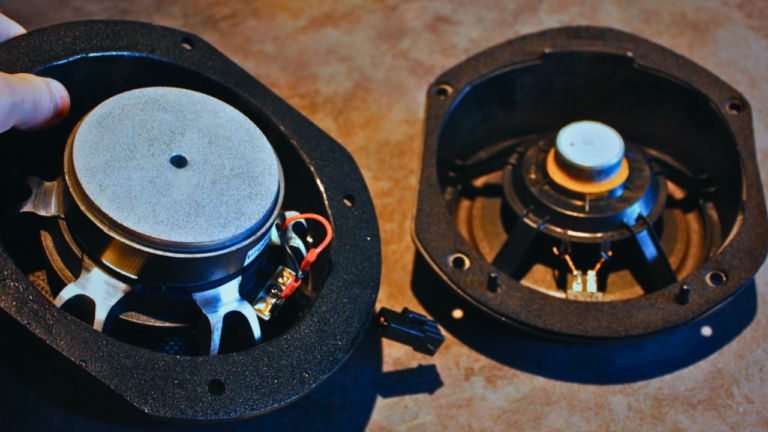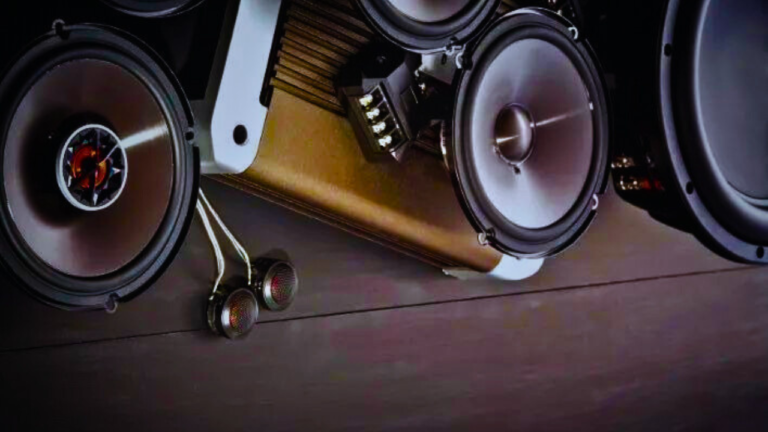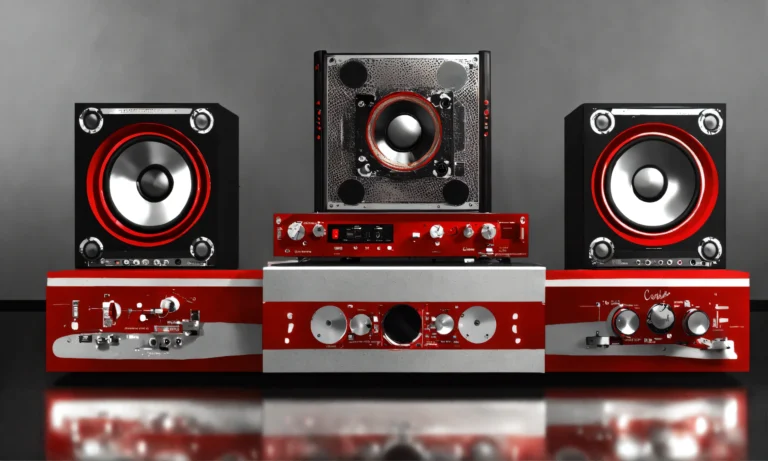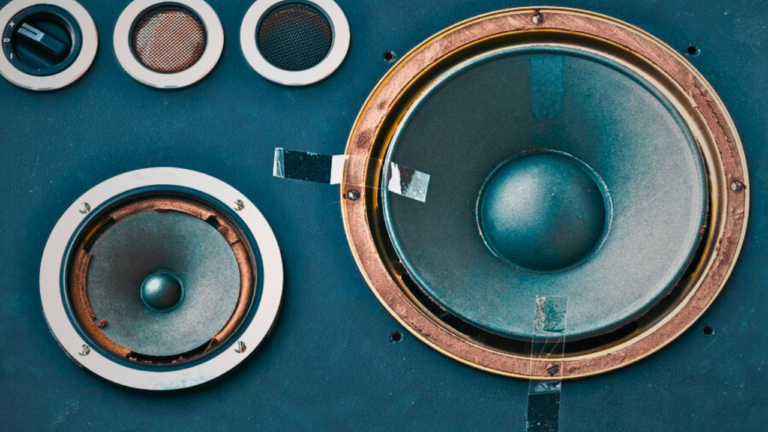Why Are Line Array Speakers So Expensive?
Have you ever wondered why line-array speakers can be hauntingly expensive? You’re certainly not alone. The price tag attached to these cutting-edge audio marvels is something that may raise eyebrows among many audio enthusiasts and professionals alike. As we dive into the world of sound and speakers, allow us to dissect the factors that contribute to the lofty cost of line array speakers.
“Line array speakers are considered the pinnacle of event audio, crushing distance and environment limitations with relative ease.”
Before we delve deeper into the complexities related to the pricing, let’s first understand what line array speakers are actually.
Understanding Line Array Speakers
Although you might be familiar with your run-of-the-mill home or car stereo systems, line array speakers function on an entirely different level. They are advanced, powerful sound systems usually found at music festivals, major sports events, or even large-scale theatrical shows.
These speakers are designed to project uniform and clear sound over long distances, even to the furthest reaches of an immense crowd. Line array speakers are renowned for their crystal-clear sound, balance, and distribution capability, explaining their ubiquitous presence at large, outdoor events.
- Advanced Technology: These devices employ cutting-edge technology that facilitates high-fidelity audio across a wide range of areas.
- Superior Design: Their unique shape and design optimize sound projection, ensuring more uniform coverage.
- High Output: Line array speakers can crank out the volume to cater to thousands upon thousands of eager listeners without sacrificing sound quality.
Now that you are familiar with what makes line array speakers unique, let us unravel why these speakers tend to cost a pretty penny.
Read also: How To Stop Car Door Rattling From Speakers?
What are the main components of line array speakers?
Line array speakers consist of several essential components that work together to produce high-fidelity sound. These components are fine-tuned to work in harmony, and each contributes to the overall performance and cost of the speakers.
- Speaker Drivers: These are the heart of line array speakers. They convert electrical signals into sound waves. The speakers typically include multiple drivers, with each one being designed and optimized for a specific frequency range. These specialized drivers often comprise materials like beryllium, neodymium, or kevlar, which are expensive due to their superb acoustic properties.
- The Cabinet: The cabinet houses all of the speaker components. It plays a vital role in speaker performance. Manufacturers often use high-quality, acoustically-inert materials to minimize any sound coloration from the cabinet, which can drive up the cost.
- Cross-overs: These components divide the audio signal into high, mid, and low frequencies. The line array speakers may have sophisticated cross-over networks to ensure optimal distribution of frequencies to each driver, hence adding to the cost.
- Amplifiers: They amplify the audio signal before it reaches the drivers. Some high-end line array systems have separate amplifiers for each driver, which maximizes the system’s power and sound clarity but also increases the price.
- Waveguides & horns: These parts help direct the sound and control dispersion. They contribute to the speaker’s ability to deliver consistent sound quality to large audiences, and their design and manufacturing can be complex, adding to the cost.
All these components need to be carefully designed, manufactured, and assembled in a way that ensures optimum performance. This process involves a lot of research, testing, and fine-tuning, contributing to a higher cost for the end product.
How does the manufacturing process of line array speakers contribute to their cost?
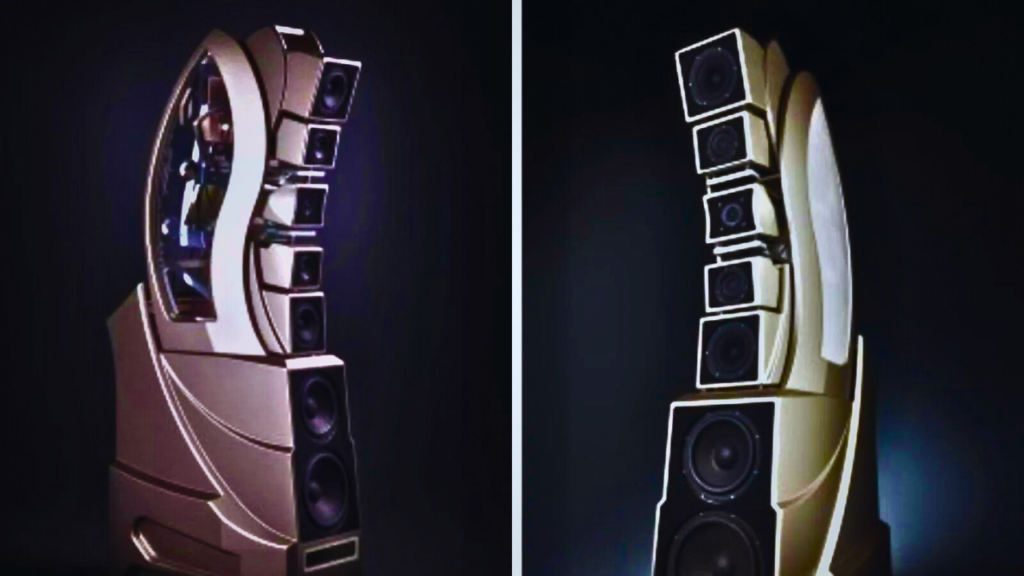
The manufacturing process of line array speakers is one of the significant factors affecting their price. It’s not just about pumping out a product en masse; the production of these audio wonders requires a meticulous and sophisticated process. Let’s dive right in and break it down.
High-Quality Materials:
Line array speakers are made with premium materials to ensure sound clarity, efficiency, and durability. These might include high-grade metals for the frame and robust composite materials for the housing. Additionally, the magnets are often made of neodymium, known for its strength and resistance to demagnetization. High-quality materials naturally come with a higher price tag.
Advanced Manufacturing Techniques:
In order to achieve the level of precision required, manufacturers employ advanced techniques and equipment. These could involve computer-aided manufacturing (CAM) processes and precision engineering technologies. Aside from the hardware, the software for design and quality control is top-notch too, ensuring each unit meets the exact parameters.
Skilled Labor:
The construction of line array speakers isn’t an entirely automated process. Human skills and craftsmanship are called for in some stages of production, adding to the labor cost. Assembling the intricate components, soldering circuits, and testing each unit for sound quality demand experienced workers.
Quality Control:
Finally, rigorous and thorough testing ensures each speaker unit meets the company’s quality standards. This is where you’ll find the faintest imperfections identified and rectified. Although quality control procedures might seem like an extra cost, they actually save manufacturers (and consumers) in the long run by limiting returns or repairs.
In a nutshell, line array speakers are a result of no-compromise production approaches that revolve around quality over quantity. This dedication to superior product creation, of course, comes with a relatively high price tag. But when it comes to providing you with the best auditory experience, isn’t it worth every penny?
What unique features do line-array speakers have that may drive up their price?
What sets line array speakers apart from their counterparts is the extraordinary and unique features they possess. These special additions not only elevate your auditory experience but also contribute to the expensive price tag attached to the speakers. Let’s dive into them:
- Superb Sound Quality: Line array speakers are renowned for their superior sound quality. They employ a technique known as “sound reinforcement” to deliver crisp, clear, and distortion-free audio. This advanced technology ensures a uniform sound pattern across a wide area, making them ideal for large venues.
- Extended Throw Distance: One of the unique features of line array speakers is their ability to project sound over large distances without losing audio quality. This extended throw distance is a big selling point, especially for outdoor events and concerts.
- Scalability: The design of line array speakers enables easy scalability. Multiple speaker units can be linked together to create a more powerful sound system. This flexible implementation makes them a favorite choice for varying audience sizes and spatial requirements.
- Highly Directional: Line array speakers are explicitly designed to be highly directional. This means they can target specific areas with sound, reducing unwanted echoes and feedback. Delivering a great sound experience to every listener is an expensive matter, after all.
- Advanced Technologies: Many line array speakers come packed with cutting-edge technology like digital signal processing (DSP), active cooling systems, and advanced power management. These technologies guarantee efficient operation, excellent performance, and a long lifespan, but they also add to the cost.
Crafting a line array speaker system that encompasses these features requires premium components, advanced manufacturing processes, and meticulous quality control.
Read also: How To Avoid Blowing Speakers?
How do market demand and supply affect the pricing of line array speakers?

The articulation of this factor can be a bit tricky, but we’re here to make it as straightforward as possible for you.
Firstly, demand. Line array speakers are sought after because of their superior features, such as high-quality sound output, wide dispersion pattern, and scalability for different event sizes. This strong demand often propels the price upward.
- Wide dispersion pattern: Line array speakers are capable of covering a large audience area, making them ideal for concerts and other large-scale events. The demand for this feature is high, resulting in a price increase.
- Scalability: They are scalable for different event sizes, which makes them versatile and highly sought-after. High demand in this area drives up the price.
On the other hand, supply refers to the availability of these speakers on the market. If any of these factors are unfavorable, they can lead to limited supply, hence raising the price.
- High manufacturing costs: Since creating line array speakers involves complex processes and expensive materials, the production costs are high. If these costs can’t be offset, the supply becomes limited and prices go up.
- Producer’s capacity: If a manufacturer doesn’t have enough capacity to produce these speakers in the desired quantity, the supply becomes constrained, resulting in a price surge.
- Availability of raw materials: The supply can be affected if there’s a shortage of the raw materials needed to produce the speakers. When resources are scarce, prices tend to increase.
So, as you see, the interconnected play of supply and demand in the market significantly influences the cost of line array speakers. High demand coupled with limited supply often results in a heftier price tag.
What role do brand reputation and marketing play in the cost of line array speakers?
Let’s talk about brand reputation and marketing and how they can significantly influence the pricing of line array speakers. Top-tier audio brands have cultivated an esteemed reputation for delivering superior quality and innovative solutions over the years. This esteem plays a direct role in justifying the high price point of their products, including line array speakers.
How so, you ask? Firstly, reputable brands are known to invest heavily in research and development processes to craft industry-leading, technologically advanced speakers. These expenditure costs are often reflected in the final retail price of the products.
Secondly, high-end brands pay meticulous attention to every detail of the manufacturing process. Whether it’s sourcing premium-quality materials, performing intensive quality control checks, or implementing precision-driven manufacturing techniques, they leave no stone unturned. This uncompromising quest for perfection often commands a higher market price.
Now, let’s shift our focus to marketing. Enormous sums are often invested in persuasive marketing campaigns to reach out to potential customers. Let’s break it down:
- Advertising: This includes expenses related to digital marketing, print ads, billboards, and TV commercials. The cost of these outreach efforts can add a significant amount to the final product price.
- Tradeshows and Events: High-end audio brands frequently participate in global trade shows and industry events. The cost of booth set-up, promotional materials, and logistics is often quite substantial, and these outlays are often reflected in the final pricing of the product.
- Endorsements: Aligning with celebrities and influencers for endorsements is yet another cost-driving factor. The fees paid to these trendsetters for endorsing the brand’s products get factored into the overall pricing.
To sum it up, the prestige and reputation of the brand, combined with hefty marketing investments, can significantly spike the price of line array speakers. That being said, these factors also assure you of the product’s top-notch quality, exceptional performance, and the brand’s commitment to customer satisfaction.
Conclusion
To make an informed decision about the purchase of line array speakers, it’s vital to first understand the reasons behind their high price tag. Rather than a simple markup for manufacturer profit, various factors contribute to the cost of these advanced and high-performing audio systems.
The quality of the material and the complex manufacturing and testing processes are crucial elements that increase the cost. The path to creating the perfect sound doesn’t only require expensive materials but also skilled manpower and time. Hence, these aspects act as a considerable part of higher pricing.
Talking about the unique features, these speakers offer unparalleled auditory experiences due to their innovative design and technology. Features such as the ability to direct sound accurately and cover large areas uniformly, while reducing echoes and distortions, justify the elevated costs.
Additionally, market forces play a role too. Demand for high-performance audio equipment, especially for larger venues, keeps prices at a premium. A higher demand combined with a relatively low supply drives up costs, reflecting the basic principles of economics.
However, the brand’s reputation and marketing also play a part in a line array speaker system’s cost. Reputable brands usually have to maintain a certain level of quality and customer service, and that often comes with higher costs. Also, the marketing of a product can add a considerable amount to its final selling price.
While line array speakers may seem expensive at first glance, a closer look reveals that the cost is an accurate reflection of the quality, innovation, precision, branding, market demand, and complex creation process associated with these sophisticated audio equipment.
When you consider the benefits and unparalleled sound experience, you will see that these powerful audio systems offer value that truly matches their cost.
Read also: How To Install Pyle Speakers?
FAQs
Why are line-array speakers often chosen for big venues?
Line array speakers are designed to deliver sound in a directional manner, focusing more on horizontal dispersion than vertical. This makes them ideal for larger venues like stadiums or outdoor festivals, where sound needs to travel far distances while maintaining clarity.
How does the design of line array speakers contribute to their high cost?
Precisely engineered to emit sound waves in a cohesive, phased manner, line array speakers include multiple speaker drivers, advanced technologies for phase and frequency management, and meticulously crafted materials. This level of design sophistication directly impacts their price.
Does brand matter when purchasing line-array speakers?
Indeed, it does! While brand isn’t everything, well-established brands often offer higher-quality products, extensive warranty coverage, and excellent customer service. However, this can also increase the cost of the speakers somewhat.
Are there inexpensive alternatives to line-array speakers?
Yes, options like point-source speakers or column speakers can be less expensive. However, each has its own limitations, especially in large-scale sound reinforcement scenarios. Choosing the right sound system depends on your specific venue and audio requirements.
Does the manufacturing process of line array speakers increase their price?
Absolutely. Line array speakers involve complex manufacturing processes, including precision engineering, high-quality material selection, and meticulous assembly. Each of these factors adds up to the high cost.
What is the ‘curvilinear’ shape of line array speakers?
The curvilinear shape, or ‘J’ shape, of line array speakers helps enhance coverage control, allowing the sound to cover more area, both near and far. This distinctive shape aids in reducing sound loss over distance.
Why is proper rigging important for line array speakers?
Rigging plays a crucial role in the performance of line array speakers. It ensures the correct angling and placement of the speakers, enabling optimum sound coverage. Improper rigging can lead to suboptimal performance and potential safety issues.
Do line array speakers require specialized technical knowledge for operation and setup?
Often, yes. Line array speakers involve a more complex setup than some other speaker systems, frequently involving detailed calculations, specialized hardware, and an understanding of sound principles. Hence, having specialized know-how is beneficial.
What is the role of high-frequency drivers in line array speakers?
High-frequency drivers in these speakers help to deliver crystal-clear treble sounds. Without these, the audio would lack detail and clarity, particularly in high-frequency ranges.
How do market demand and supply affect the price of line array speakers?
Like most products, market dynamics significantly influence the cost of line array speakers. High demand and low supply can lead to a price hike. Additionally, the presence of competition, product innovation, and evolving consumer needs can also play a role.

Hey there! I’m Henry Jack, the voice behind speakerrealm.com, your ultimate destination for everything speakers. Whether you’re a seasoned audio enthusiast or just starting to explore the world of sound, you’ve come to the right place.
At Speaker Realm, I dive deep into the realm of speakers, bringing you comprehensive reviews, insightful guides, and the latest trends in the industry. From floor-standing behemoths to compact bookshelf wonders, I cover it all.
I’m passionate about helping you find the perfect speakers to elevate your audio experience. Whether you’re setting up a home theater, upgrading your sound system, or just looking for some quality audio gear, I’ve got you covered.
But Speaker Realm isn’t just about technical specs and performance metrics—it’s also about the art and science of sound. I explore topics like acoustic design, speaker technology, and the impact of audio on our lives.
So whether you’re a casual listener or a hardcore audiophile, join me on this journey through the world of speakers. Let’s turn up the volume and explore the endless possibilities of sound together at speakerrealm.com!
